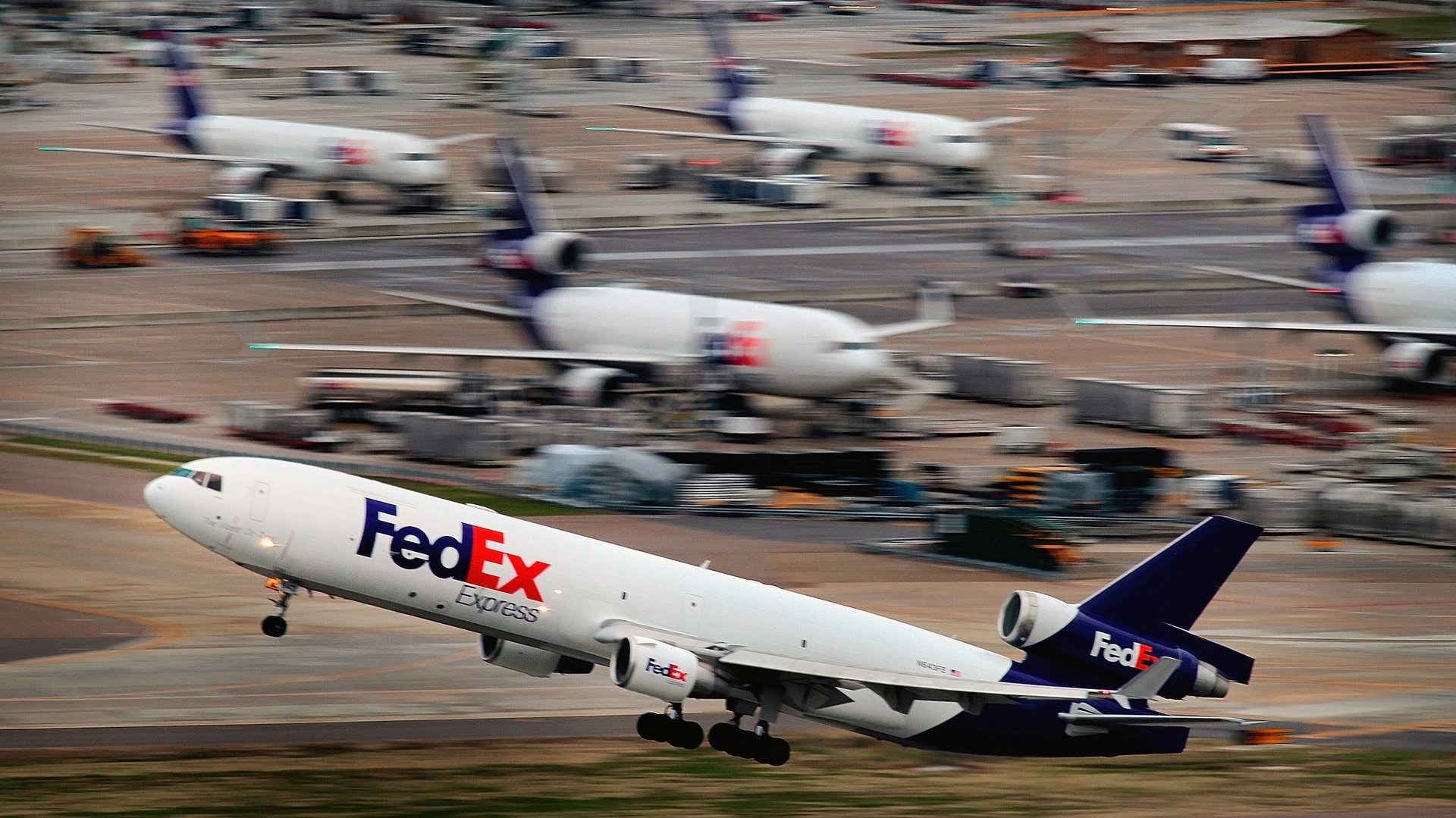Fedex is betting that people won’t be sending more stuff by air anytime soon
Slow global growth and high energy prices have hit demand for Fedex’s most expensive international shipping services, the company said today after reporting quarterly earnings. Though air cargo is now a $98 billion industry, the company is still scrambling to adjust to what it calls a “sea change” in the way goods are moved around the world.


Slow global growth and high energy prices have hit demand for Fedex’s most expensive international shipping services, the company said today after reporting quarterly earnings. Though air cargo is now a $98 billion industry, the company is still scrambling to adjust to what it calls a “sea change” in the way goods are moved around the world.
In a conference call today, Fedex executive vice president Mike Glenn told investors [transcript lightly edited from Factset]:
We’ve seen a decline in four of the last five years in overall traffic levels in the air cargo segment, and really four issues that are driving that. One is global GDP has been growing at a slower pace. Global trade drives air cargo and has traditionally grown faster than global GDP, but that’s not been the case recently…We’ve seen a decline in global air cargo market four of last five years. Energy prices are having an impact on that. So the global air cargo market has been under pressure for four the last five years.
Although Fedex’s “priority” business yields higher margins for the company, executives aren’t optimistic about the volume in higher-priced shipping. Revenues from their International Priority package-shipping business fell 4% year-over-year. It’s little surprise, then, that the company says it’s only replacing planes from its fleet, not adding any more.
Not so with their cheaper options, however. Revenue from the company’s International Economy and International Domestic—both of which use ground transportation—rose 10% and 64%, respectively, in the last year. Most of the company’s new investments will be in this ground network, executives said.
Fedex founder and CEO Frederick Wallace Smith said that high energy prices in particular are still causing businesses to behave differently, even as analysts herald a forthcoming energy revolution driven by shale oil and gas discoveries in the US. “The price of Brent is still north of $100 a barrel and people forget that 10, 11 years ago, it was a $0.60, $0.70 per gallon versus $3 and some odd cents per gallon now. That’s had enormous impacts on people’s thoughts about transportation alternatives, and it does make people willing to trade-off rate for speed.”